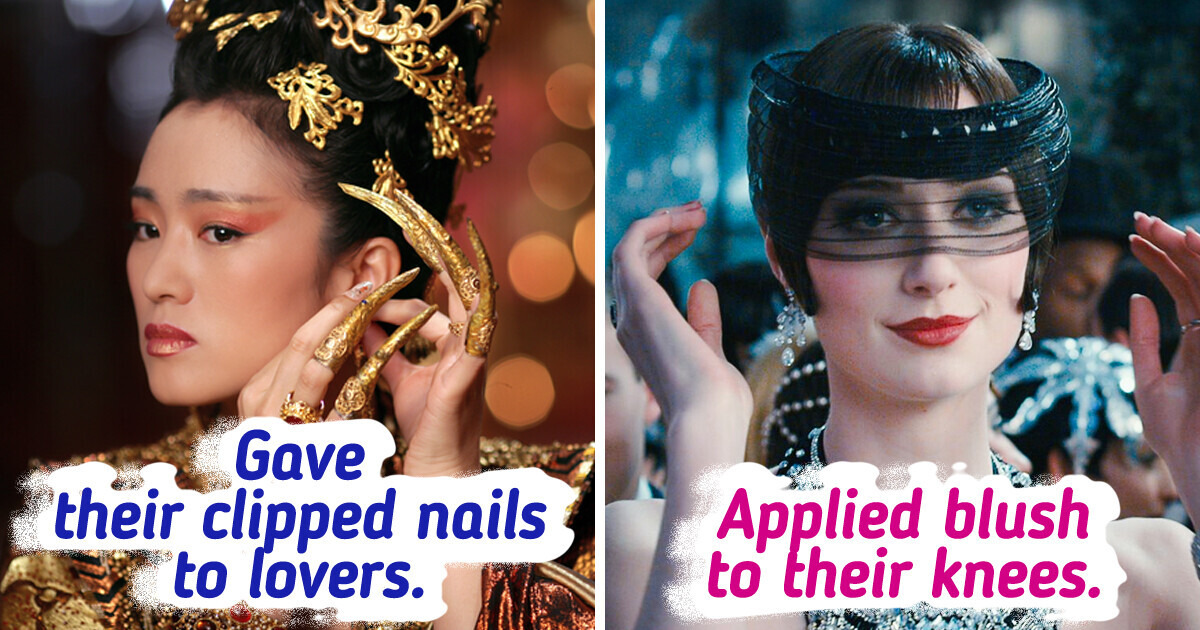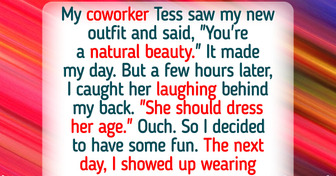10 Family Secrets That Changed How People See Their Loved Ones


We are used to taking care of ourselves: we buy creams and masks, visit a beautician and follow beauty routines. Luckily there are plenty of beauty treatments and products on the market. But beauty standards and devices for its preservation in the past were quite different, and often quite exotic. Read about the ways in which women of different eras achieved the desired changes in appearance when there was no beauty industry at all.
In ancient China, long nails were considered a sign of wealth and status. They were so long that women couldn’t bathe, eat or dress without the help of numerous servants. Nail polish was made from beeswax, egg white and natural colors. It was used to paint intricate patterns of flowers, birds and dragons on the nails.
To protect this beauty, Chinese women wore nail covers that were made from gold, silver, bronze or jade, inlaid with precious stones, and richly decorated. Chinese women even gave their clipped nails in a silk bag to men as a token of their love.
Ancient Romans attached great importance to hairstyles: the way a person styled their hair could tell a lot about their age, status and profession. Complex hairstyles were in fashion, demonstrating the wealth of the owner and their position in society. The Romans associated “natural” hair with rude barbarians.
The Romans didn’t want to put up with gray hair and dyed their hair with a mixture of plants and ground earthworms, and lightened it with pigeon droppings.
Ancient Egyptian women were just as much invested in keeping their beauty as modern women. They used a soapy paste of clay and olive oil to cleanse the skin and fought wrinkles by applying sesame and castor oil to the face.
By the way, castor oil is not a thing of the past. Charlize Theron recently praised it: she applies it to her scalp and eyebrows because it makes her hair thicker.
Even in the dark Middle Ages, women wanted to become more beautiful and used every thing available to do so. Makeup was considered indecent, although it was allowed for women who had suffered illness to disguise its traces. A small amount of makeup was allowed so that the husband would not cheat, but it was important to maintain modesty so that not to become too attractive to other men.
Women made beauty products themselves. You can still find those recipes. For example, a balm for softening lips and hands was made from lard and marjoram.
During the Renaissance, big eyes with dilated pupils were considered beautiful, so women used an extract of the poisonous plant belladonna to prevent them from shrinking. They probably couldn’t see very clearly, and these drops could lead to a significant deterioration of vision.
In the 1920s, flappers emerged in the United States. These were young women who sought to show their boldness and independence, including through clothing and cosmetics. They protested against societal norms that required women to behave modestly and dress appropriately.
Flappers wore stockings, pulling them down and exposing their bare legs. They applied blush to their knees to draw even more attention to them, and some even painted pictures on them, like flowers or butterflies.
The use of arsenic, mercury and other toxic substances to lighten the skin has a long history. Venetian ceruse and other dubious beauty products were in high demand. People wanted to be beautiful at all costs and were not even stopped by the scars on their faces. And the Countess of Coventry, who lived in the 18th century, even died from lead poisoning which she used in her beauty routine, and became known in society circles as a “victim of cosmetics.”
Even in the 20th century, women were still using creams containing ammoniacal mercury and sulfur, which are actually poisonous to remove freckles. Toxic beauty products remained on the market until the 1970s, despite warnings from doctors.
And here are unusual beauty practices from different countries of the world. Check them out.











